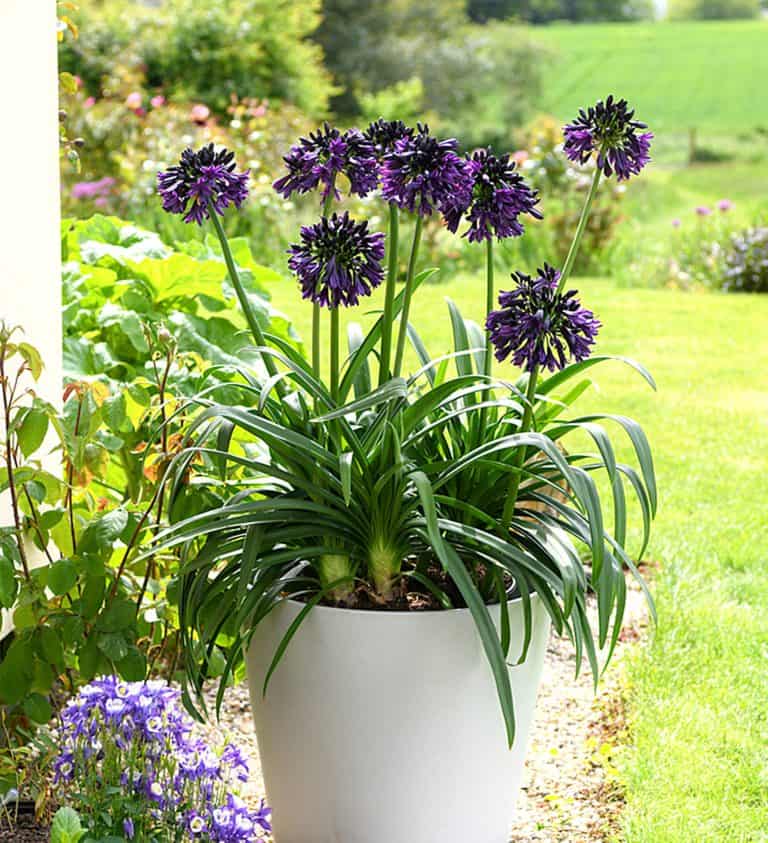Mastering the Art of Agapanthus Care: Vital Actions for Healthy Development and Dynamic Blooms
In the realm of horticulture, the farming of agapanthus stands as a satisfying endeavor for those that look for to nurture these stylish blooming plants. From selecting the best selection to mastering pruning techniques, the trip in the direction of cultivating flourishing agapanthus plants is multifaceted and holds the key to opening the complete possibility of these organic gems.

Picking the Right Agapanthus Range

When picking the right Agapanthus variety for your garden, take into consideration factors such as climate viability, flower color, and development habit. In addition, consider the environment in your region to make sure the Agapanthus selection you choose can flourish in your certain problems. Recognizing the growth routine of different Agapanthus varieties is crucial for appropriate positioning within your garden.
Ideal Growing Conditions
Considering the optimal environmental requirements is important for successful Agapanthus farming. Agapanthus plants are sensitive to chilly temperatures and must be shielded from frost during winter season months.
To ensure healthy and balanced development and lively flowers, plant Agapanthus light bulbs at a depth of regarding 2-4 inches and space them 8-12 inches apart. Including raw material, such as compost, to the soil can boost drainage and fertility, advertising robust origin growth. Mulching around the base of the plants helps maintain wetness and reduces weed growth. Normal watering is vital, specifically during the expanding season, to maintain the dirt consistently damp but not soaked.
Watering and Fertilizing Tips
Keeping appropriate wetness levels and giving crucial nutrients are crucial elements in the treatment routine for Agapanthus plants. It is crucial to strike an equilibrium when it comes to watering Agapanthus. If overwatered, these plants favor constantly moist soil yet are at risk to root rot. During the expanding season, water deeply when a week, ensuring the dirt is well-draining to avoid waterlogging. In hotter environments or during durations of drought, more constant watering might be essential to maintain the soil uniformly damp. Nevertheless, reduce watering in the winter months to avoid water logged conditions.
Feeding Agapanthus is essential for promoting healthy growth and respected flowers. Apply a well balanced fertilizer, such as a 10-10-10 formula, in the early springtime as brand-new development emerges. By complying with these watering and fertilizing ideas, you can ensure your Agapanthus plants thrive and generate lively, lasting blossoms.
Trimming Strategies for Agapanthus
Pruning Agapanthus plants at the suitable times and with proper methods is crucial for maintaining review their wellness and promoting optimal development and blooming. The perfect time to trim Agapanthus remains in late winter or early springtime prior to brand-new development emerges. Begin by getting rid of any type of yellowing or dead leaves near the base of the plant. Cut them as short as feasible without damaging the arising shoots.
For flowered stems, wait till the blossoms have withered and after that cut them back to the base. This not only cleans the plant's look yet likewise encourages the advancement of new blossom buds. Deadheading invested blossoms can likewise reroute the plant's power right into creating more blooms instead than establishing seeds. Nonetheless, if you desire to accumulate seeds for propagation, leave some blossoms to dry and fully grown on the plant.
Keep in mind to make use of tidy, sharp tools to make precise cuts and reduce the risk of introducing illness. Agapanthus. Regular trimming will certainly help maintain your Agapanthus looking healthy and neat while making certain an abundant screen of beautiful blooms
Handling Common Parasites and Diseases
After ensuring proper trimming strategies for Agapanthus, it is essential to attend to typical bugs and illness that can impact the wellness and vigor of these plants. Agapanthus plants are generally hardy however can still succumb to certain issues. One typical parasite that impacts Agapanthus is the Agapanthus gall midget. This small, orange fly lays its eggs in the foliage, bring about distorted development and flower buds that fail to open up. To battle this insect, trim and destroy any kind of afflicted plant parts and take into consideration utilizing insecticidal soap.
An additional common problem is fungal fallen leave place, which presents as dark lesions on the leaves. To protect against fungal diseases, make certain good air blood circulation around the plants, prevent above watering, and remove any kind of infected fallen leaves immediately. In addition, Agapanthus plants can experience root rot if they are planted in poorly draining dirt. To stop this, plant Agapanthus in well-draining soil and stay clear of overwatering. By being alert and taking punctual activity versus diseases and bugs, you can assist your Agapanthus plants thrive and generate vivid blooms.

Final Thought
Finally, mastering the art of agapanthus care entails picking the right range, giving ideal planting problems, proper watering and fertilizing, ideal pruning methods, and dealing with typical parasites and top article diseases. By adhering to these vital steps, you can make certain healthy growth and vivid flowers for your agapanthus plants. Remember to consistently check and maintain your plants to promote their Click This Link general health and long life.
To make sure healthy growth and vibrant flowers, plant Agapanthus light bulbs at a depth of concerning 2-4 inches and space them 8-12 inches apart. By adhering to these watering and fertilizing tips, you can guarantee your Agapanthus plants grow and produce dynamic, lasting flowers.
One common bug that affects Agapanthus is the Agapanthus gall midget. Additionally, Agapanthus plants can endure from origin rot if they are planted in poorly draining soil. By adhering to these necessary actions, you can ensure healthy and balanced development and dynamic blooms for your agapanthus plants.
 Barret Oliver Then & Now!
Barret Oliver Then & Now! Michael Bower Then & Now!
Michael Bower Then & Now! Patrick Renna Then & Now!
Patrick Renna Then & Now! Michael C. Maronna Then & Now!
Michael C. Maronna Then & Now! Katey Sagal Then & Now!
Katey Sagal Then & Now!